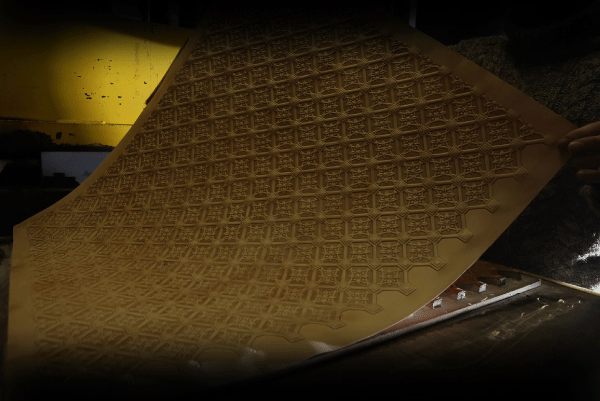 - Welcome - Leather
- Welcome - Leather
Leatherwork
The hides used for leatherwork are mainly those of cattle with thick leather. The finer skins of crocodiles, goats, sheep, snakes, ostriches, and recently fish served to create refined objects.
The hides must be cleansed beforehand and then soaked in a vegetable bath made from bark for natural treatment; the chemical method is a mineral treatment. This tanning makes the leather unalterable. The optimized cutting of the different parts and the assembly are carried out with robust tools.
Leatherworking
The leather craftsman makes leather objects for decoration, luggage, office, and accessories such as shoes, belts, and bags. The morocco refers to the tanned goat skin used mainly as raw material in the past, particularly in Morocco.
This profession requires dexterity for precision cutting, shaping the material, and solidly assembling the parts. The location of the sewing points is beforehand marked on certain pieces using a hammer and a claw. The size and nature of these points may vary depending on the purpose of the object. He uses several embossing techniques, such as stamped leather or marked leather.

Cordoba leather
This leather is named after the city of Cordoba in southern Spain. These golden leathers, adorned with strong reliefs, were widespread in the Middle Ages. Colorful, embossed leather wall hangings were imported from Spain to France.
The embossing of this moistened leather is done using a press equipped with a plate decorated with the desired pattern. A drying time of several hours is essential before applying the various shades and paints. And finally, the finish is achieved by applying the final patina.

Leather embossing - Photo credit Ets Tassin Paris.

Application of a first background shade, courtesy of Ets Tassin in Paris.
Saddler
The saddler is a craftsman responsible for making and repairing saddles and harnesses. Formerly, he was involved in fitting out horse-drawn carriages.
The leather is used to equip old vehicles and motorcycle saddles, or to restore the folding top. It is an essential know-how in the restoration of old vehicles.
This work begins with a careful selection of leathers. Then steps of cutting, stitching, and assembly follow.

Photo credit: MFC "Manufacture Française du cuir" Abbeville city in the Somme department.
